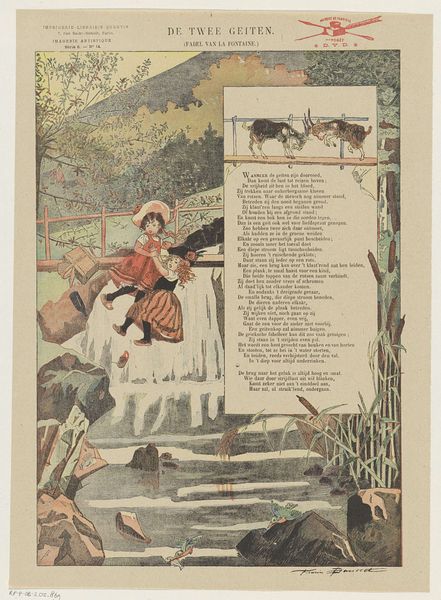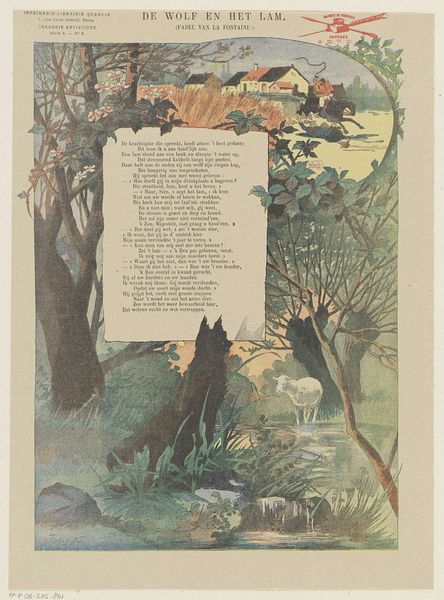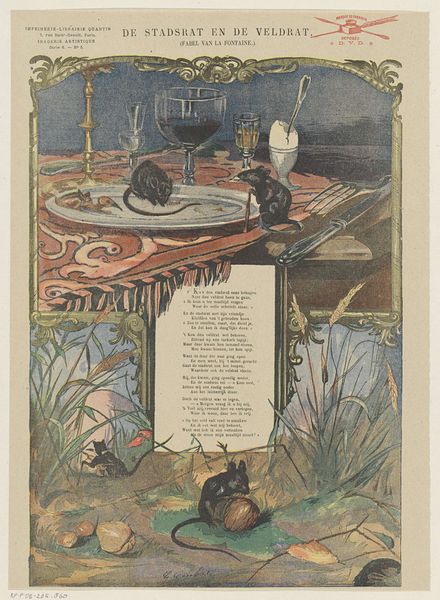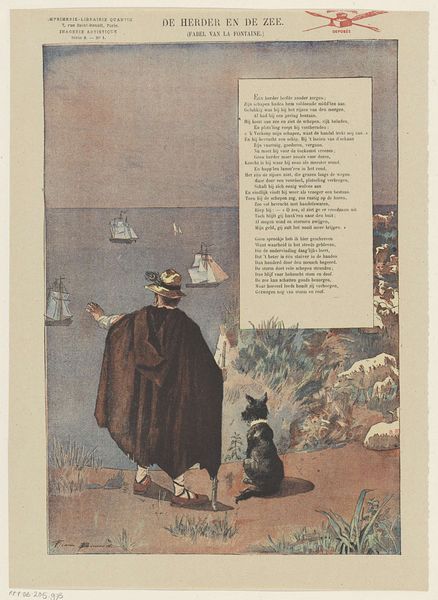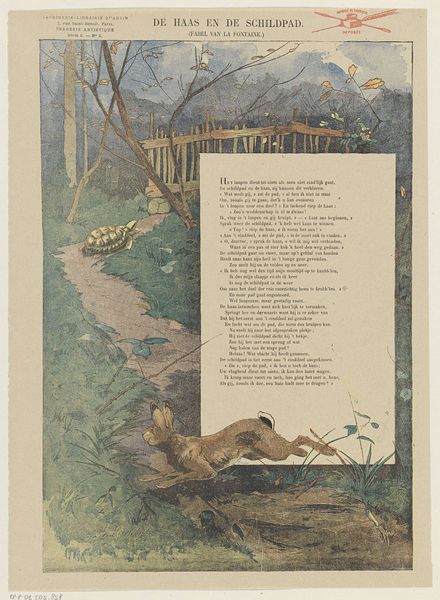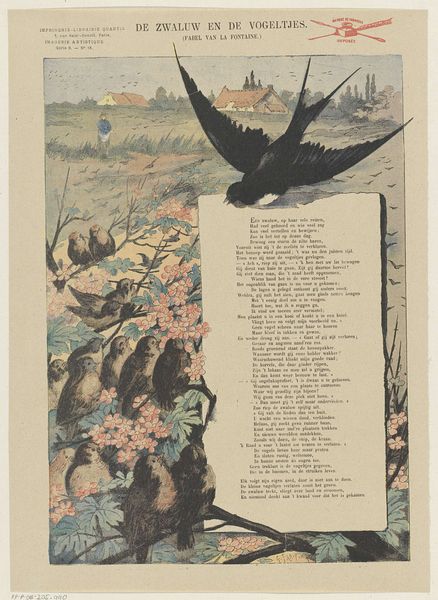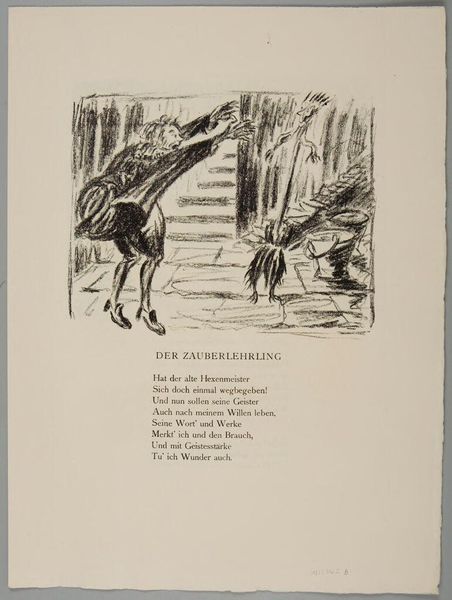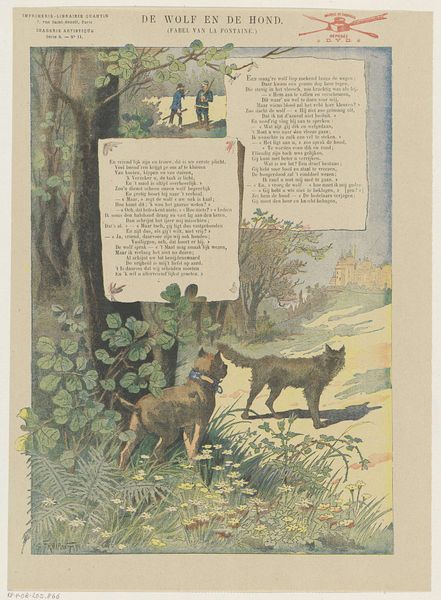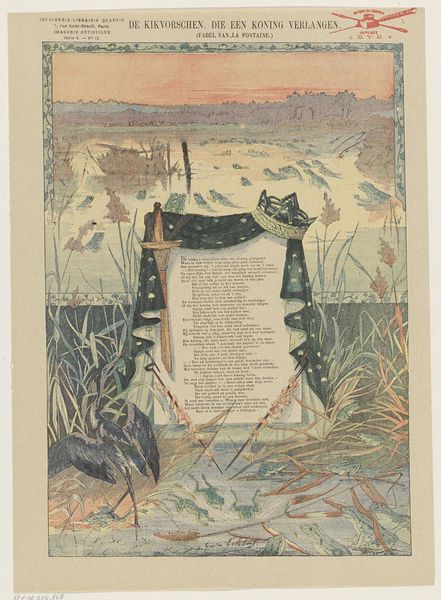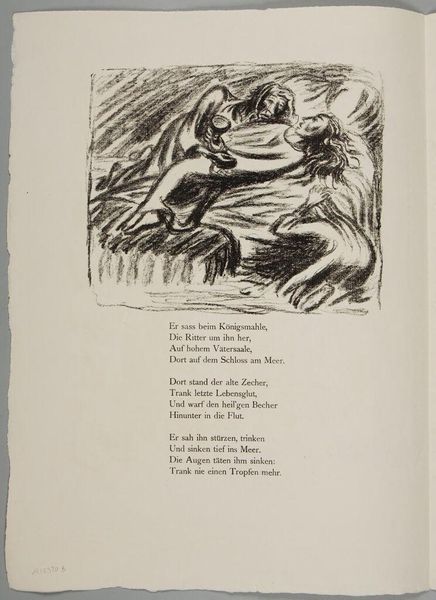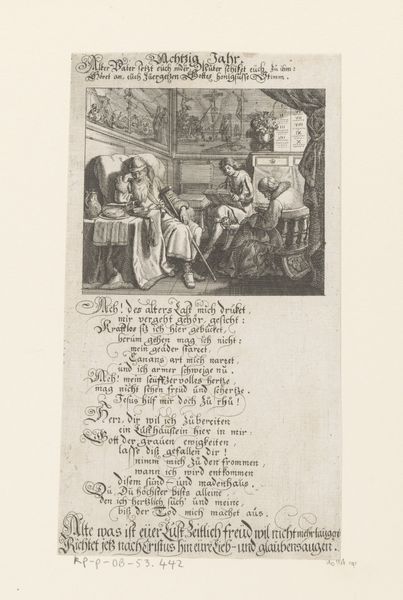
mixed-media, print
#
aged paper
#
mixed-media
#
toned paper
#
water colours
#
narrative-art
# print
#
traditional media
#
retro 'vintage design
#
personal sketchbook
#
watercolour bleed
#
watercolour illustration
#
genre-painting
#
watercolor
Dimensions: height 366 mm, width 268 mm
Copyright: Rijks Museum: Open Domain
Curator: Firmin Bouisset's "De rat en de oester," created sometime between 1876 and 1890. What springs to mind when you look at it? Editor: Immediately, I’m struck by the odd juxtaposition of the romantic sunset scene on one side and the very domestic narrative unfolding next to it—like two entirely different lithographs clumsily mashed together. Curator: I think that is actually very astute. It is created with mixed-media – you’ve got the printmaking right next to what seems to be watercolour illustration, probably aged and toned paper underneath too. Editor: Which just highlights its existence as an object made with human labour, right? We're seeing evidence of printing processes, manipulation of paper and watercolor. How often do we really consider the intense making that goes into this kind of visual narrative, presented in the service of education perhaps? Curator: I wonder... look how much is devoted to that glorious bleed of watercolor on the bottom. I almost miss that it depicts a rat with an oyster at first because the colours of sunset is almost magical. It's very dreamy, right up until you register the poem and its rather mundane storytelling right above it. Editor: Right! I'm suddenly imagining the hands of the people involved in making and distributing such an image to its potential consumers, who are also laboring. I guess, these images made by Bouisset probably became incredibly commonplace, adorning pages in books. So you have a question: for whom are such pretty illustrations and highbrow stories intended anyway? I see the echoes of labor everywhere in it. Curator: The juxtaposition creates an unexpected visual harmony. It's a simple artwork of fable combined with this gorgeous sunset. You wonder who thought about joining these separate pieces, like how this image ended up being a story about wealth that features so much working process in order to tell the story. It is funny, if not tragic. Editor: It makes you appreciate what labour produces -- not only artistic vision but tangible output too! Something we easily lose sight of! It certainly highlights art's relationship to its social setting. Curator: So true! Bouisset creates not only image or artwork but gives light of a small social class during his time as well.
Comments
No comments
Be the first to comment and join the conversation on the ultimate creative platform.
